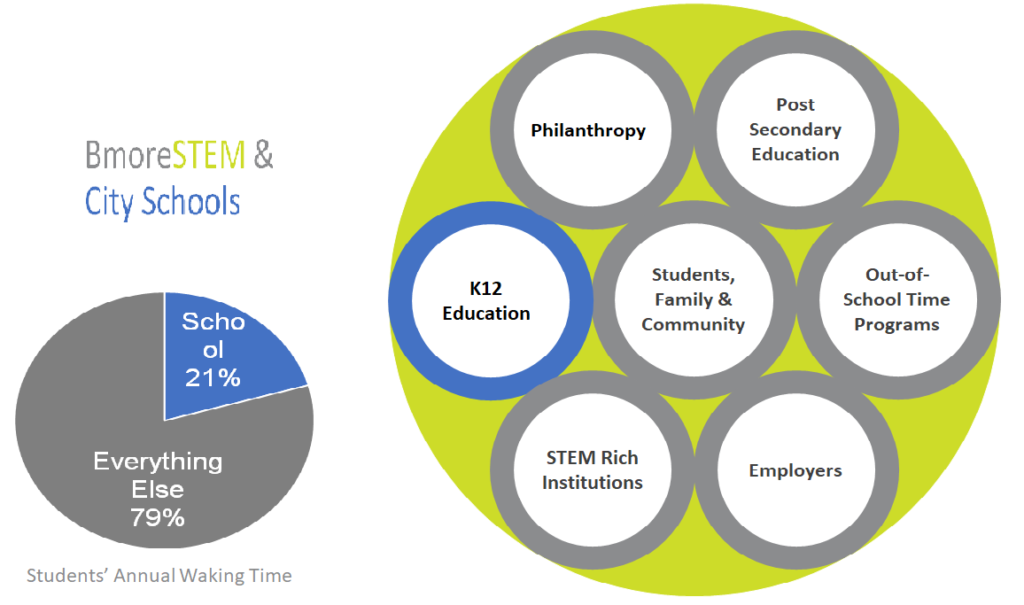Sectors are a way to categorize organizations. Members of BmoreSTEM are associated with different sectors.
What sectors are involved in BmoreSTEM?
- Employers: Businesses, business-related organizations, government agencies, and any other organization that hires employees for STEM-related jobs
- Family & Community: Baltimore residents (including students) and organizations supporting families and/or communities, including local government agencies and volunteer-focused organizations
- K-12 Education: Baltimore City Public Schools and other embedded organizations that primarily provide education during the school day
- Post-Secondary Education: Colleges, universities, community colleges, and job training programs
- STEM-Rich Institutions: Museums, science centers, and any other STEM related institution
- Out-of-School Time (OST): Organizations providing supplemental STEM programming for students outside of the school day
- Philanthropy: Organizations providing funding for STEM-related initiatives
How does BmoreSTEM benefit each sector?
- Employers: Maryland consistently ranks near the top in growth of STEM-related jobs and faces a critical workforce shortage. Employer engagement in the STEM ecosystem will build a dynamic pipeline of diverse and qualified STEM talent prepared to compete for STEM-related careers.
- Family & Community: Students and families will be introduced to exciting STEM career opportunities and supported as they navigate pathways into careers. The STEM ecosystem will increase prosperity for all of Baltimore by providing increased access to high-skill, high-demand, and high-paying STEM careers.
- K-12 Education: All students need to become informed citizens who are equipped to pursue STEM career opportunities. STEM ecosystem workgroups will remove barriers and increase the number of students who are prepared for post-secondary STEM studies and careers.
- Post-Secondary Education: A STEM ecosystem will foster positive community relationships and improve the quantity, and preparedness, of local applicants.
- STEM-Rich Institutions: Cross-sector collaboration within a STEM ecosystem will foster the development of connected learning experiences that engage all young people and showcase our city’s museums, science centers, and STEM institutions.
- Out-of-School Time (OST): The STEM ecosystem will highlight the importance of OST learning and improve communications between schools, community partners, and funders. Coordinated collaboration will align opportunities with student needs and maximize the effectiveness of limited resources.
- Philanthropy: The STEM ecosystem will expand cross-sector partnerships to optimize the effectiveness of available funds. Information sharing within the ecosystem will allow grant makers to make better funding decisions and grant seekers to reduce duplication of effort.

